Why Public NFT Platforms Are the Wrong Choice for Academic Credentials
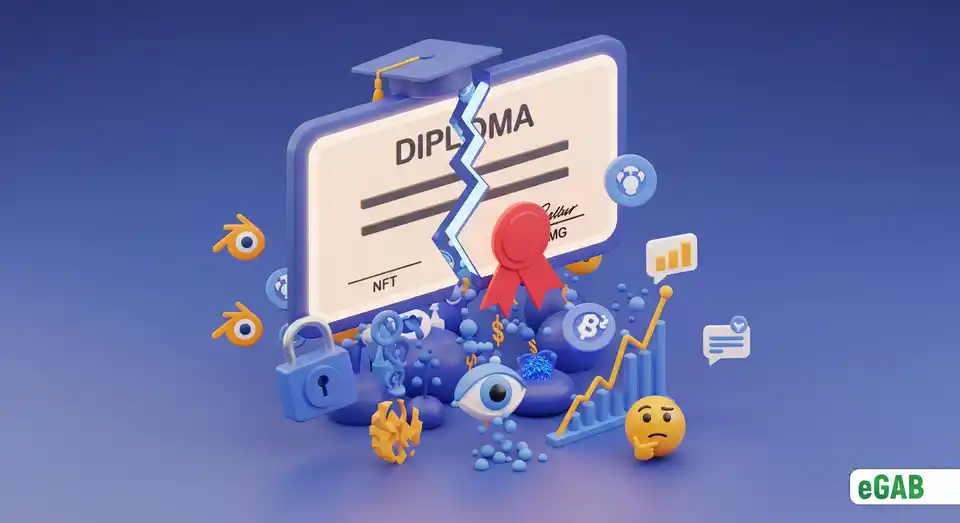
 Author:
Artem Grigoriev
Author:
Artem Grigoriev
- Why Can't Employers Trust Credentials on Public Marketplaces?
- How Do Public Blockchains Expose Student Data and Violate Privacy Laws?
- What Are the Unpredictable Financial Costs of Using Public Platforms?
- Why Is the Verification Process a User Experience Nightmare?
- The best alternative to public NFT platforms
- Summary: The Final Verdict on Public NFTs for Academic Credentials
The idea of issuing degrees as NFTs sounds like a perfect leap into the future, doesn't it? For universities looking to innovate, it definitely seems cutting-edge and feels like a great way to make academic credentials more secure and verifiable.
But what happens when that futuristic solution is built on the wrong foundation? That's the critical flaw. It’s what happens when you use public NFT platforms for something as important as a diploma. We get it-the concept of using NFTs to create verifiable academic credentials is exciting. But placing them on open marketplaces is fundamentally the wrong choice for academic credentials . These platforms were designed for digital art, not for education, and that creates a minefield of security, privacy, and usability issues.
Let's break down exactly why this approach is so dangerous. We'll explore the critical security gaps that make employer verification impossible, the severe privacy violations that conflict with laws like GDPR, the wild financial costs, and the nightmarish user experience that defeats the entire purpose.
📘 This post is part of our comprehensive guide to "The Problems with Paper Documents: A Complete Guide". Explore it to find answers to all your questions ;)
Why Can't Employers Trust Credentials on Public Marketplaces?
Let's put you in a hiring manager's shoes for a minute. You’re looking at a candidate's resume, you see a degree listed, and-while facing the common headache of verifying international credentials-your first question is simple: "Is this real?" In a world where fake diplomas are a booming global industry, that question is impossible to ignore. The scale of the problem is huge. A detailed report from World Education Services (WES) on Diploma Mills shows just how advanced these fraudulent operations are. In fact, the Verifile Accredibase report uncovered a shocking fact: it has already identified over 2,500 bogus institutions -in other words, fake universities. In an environment like this, trust and verification aren't just nice-to-haves; they're absolutely critical.
So, with that stark reality in mind, why would anyone even think about using a public NFT marketplace for something so important? While using NFT academic credentials might sound cutting-edge, it actually opens up a whole new can of security worms. This gets us to the fundamental problems with NFTs for diplomas , especially when they're handled on open, unregulated platforms. Just think about popular sites like OpenSea. They were built for trading collectibles like cartoon apes and digital art. Why on earth would you use them for something as vital as a legitimate academic credential?
The simple answer is: you wouldn't. This leads to a crucial question: can NFT diplomas be trusted by employers? When they're issued on a public platform, the answer is a firm no. It’s fundamentally the wrong tool for the job. Because these public platforms are open to anyone, they completely lack the foundation of trust needed for high-stakes documents. There's no built-in Trusted Third Party (TTP) -an independent entity that ensures trusted interactions-to oversee the process. So, how does a Trusted Third Party (TTP) improve credential verification? It acts as a gatekeeper, confirming an institution is legitimate before it can ever issue a credential. On top of that, there's no Certification Authority (CA) -an organization that validates identities-to confirm the issuer is who they claim to be. This complete lack of oversight turns verifying NFT credentials into a minefield. Think of a CA like the government agency that issues passports; it's the official proof that the document is real. Without this critical layer of trust, an employer's verification system immediately hits a brick wall. This failure spits out a cryptic error like "Trust anchor for certification path not found," which is just tech-speak for, "I can't find a trusted source to prove this is real."
For any non-technical HR manager, an error like that is a total dead end. It means their system has no reliable way to tell the difference between a real degree from an accredited university and a convincing fake minted by a diploma mill. This single gap shatters the entire chain of trust. In an untrusted environment, a digital credential becomes worthless because you can't easily prove who issued it, and you certainly can't prove they had the authority to do so.
Why It Matters: Here's the bottom line: without a trusted authority validating the issuer of the credential, the credential itself is useless for any real verification. Public marketplaces don't care about the source; they treat a prestigious university diploma and a worthless fake as just two more NFTs in a vast digital ocean. This makes them fundamentally broken for any process that relies on data integrity and a trustworthy, verifiable source.
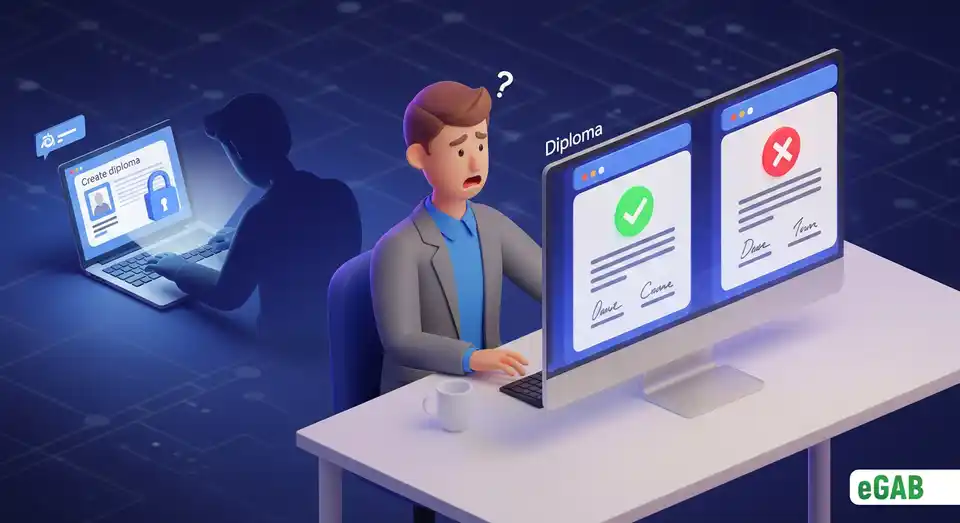
How Do Public Blockchains Expose Student Data and Violate Privacy Laws?
Let's be blunt: putting academic credentials on a public blockchain is a profoundly bad idea. It's the digital equivalent of tattooing your students' most sensitive personal information on their foreheads for the whole world to see. These NFT diplomas privacy issues aren't just theoretical-they create immediate and severe legal risks. The information becomes both permanent and public, which means once it's on the chain, you can never take it back. This unchangeable nature directly clashes with our fundamental privacy rights, like the "right to be forgotten"-a core principle in modern data protection laws. So, how do public blockchains violate student privacy laws like GDPR? It's simple: they make data deletion, a legally required right, technically impossible.
Let's be crystal clear: this isn't some philosophical debate. It's a massive legal and financial liability for any institution that dares to go down this dangerous path. If your university has European students, this practice puts you in direct and unavoidable conflict with the strict regulations of the General Data Protection Regulation (GDPR) . The tension between GDPR and blockchain records boils down to this very immutability. As Article 17 of the official GDPR text spells out, individuals have the explicit right to request that their personal data be completely deleted. And here’s the fundamental problem: a public blockchain's unchangeable design makes it impossible to ever honor that request. This begs the question: can you delete personal data from a public blockchain? The simple answer is no, you can't. The financial penalties for getting this wrong are astronomical. Fines for these kinds of violations can reach up to a staggering 4% of an institution's global annual revenue . If you think that's an exaggeration, just look at the real-world consequences: Amazon was slapped with a jaw-dropping €746 million fine and Meta faced a €390 million penalty, both for data privacy violations.
In the United States, the stakes are just as high. You'll run into the exact same problems with FERPA violations with NFTs , where sensitive student data is exposed on a public ledger. Publicly posting student records is a surefire way for an institution to violate the Family Educational Rights and Privacy Act (FERPA) . And a major violation here isn't just a slap on the wrist; it could lead to a complete loss of all federal funding . For most schools, that's an existential threat. By putting personally identifiable information (PII)-any data that could be used to identify a specific person-on a permanent and public record, you're creating a ticking time bomb. It's a bomb that endangers not only your students but your institution itself, as it completely undermines the very concept of responsible data privacy.
Takeaway: While a public blockchain's permanence might be a feature for cryptocurrencies, it's a catastrophic bug when it comes to personal data. Once a student's private information is recorded on that public ledger, it is there forever. This creates a permanent legal, reputational, and compliance nightmare for the institution that irresponsibly put it there in the first place.
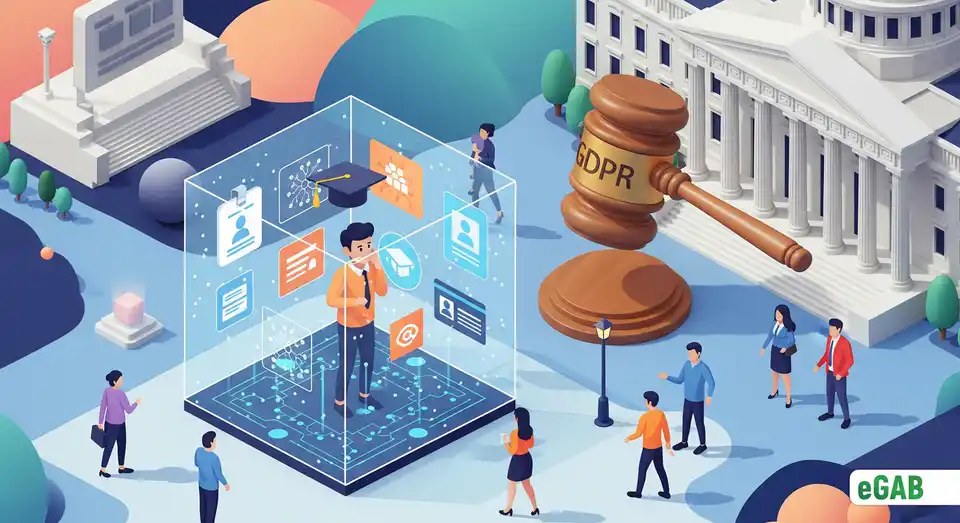
What Are the Unpredictable Financial Costs of Using Public Platforms?
Imagine you're trying to run a university department on a predictable budget. What would you do if issuing a diploma cost you twenty cents on Monday, but by Friday, that same process cost nearly two hundred dollars? That's the exact financial chaos you invite when you use public blockchains. So, what are the real costs of using NFTs for university degrees? These wild price swings happen because public blockchains like Ethereum run on transaction fees, better known as "gas fees." The cost of these fees depends entirely on how busy the network is at any given moment, making them incredibly volatile. And we aren't talking about small changes. Historical data tracking Ethereum's average transaction fees (YCharts) shows these fees have jumped from a low of just $0.20 to a shocking $196 for a single transaction .
This isn't just a theory-it's a real-world problem that schools are facing right now. The unpredictable cost of minting NFT certificates makes budgeting an absolute nightmare. Just look at a real university case study: a mere 219 blockchain transactions for issuing credentials cost the institution $657.40 (which was 0.767 Ether at the time). These volatile NFT gas fees for universities create a massive operational risk. Now, imagine trying to scale that up for the thousands of graduates you have every single year. You can see how your budget quickly becomes a complete guessing game. At one point, the total daily gas fees on Ethereum hit an eye-watering $23 million , only to crash by over 70% just a short time later. That kind of wild instability makes solid financial planning impossible for any school that needs a predictable annual budget.
Ultimately, what starts as a cool, low-cost experiment can quickly snowball into a massive and uncontrollable expense. For any university that needs financial stability to operate, this is a deal-breaker. Relying on a system with such extreme and unpredictable price swings is simply not a realistic long-term strategy.
Quick Insight: The "gas fee" model was designed for high-stakes environments like crypto trading or decentralized apps. It was never built for the stable, predictable, and scalable needs of a university. The financial gamble and complete lack of predictability make public blockchains a non-starter for issuing credentials at scale-they simply weren't designed for the job.
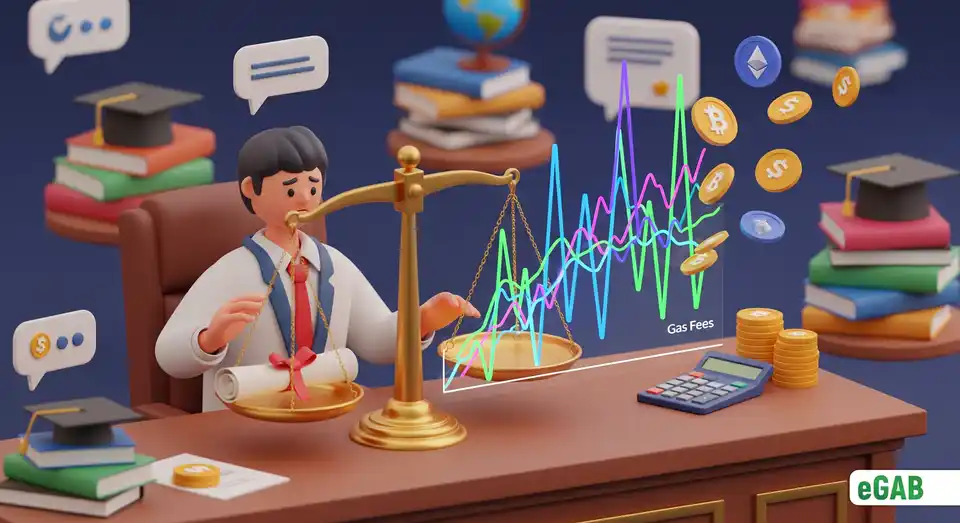
Why Is the Verification Process a User Experience Nightmare?
Let's be honest. The whole point of switching to digital credentials is to make verification better-faster, simpler, and far more secure. But when you try using public NFT platforms for this, it’s a flawed approach, much like why an in-house verification system is a mistake. The user experience for NFT verification ends up being anything but simple. You get the exact opposite of what you wanted: a clunky, confusing, and deeply impractical process. This is especially painful for the very people who need it most, like HR managers and university admissions officers.
Instead of a simple, one-click process, verification turns into a tedious chore. So, is it hard to verify an NFT diploma? For the average person, absolutely. This approach essentially forces users to become part-time crypto analysts. They’re expected to navigate complex and unfamiliar tools like block explorers (websites for viewing blockchain transactions). Then they have to download special software like the MetaMask crypto wallet. On top of that, they need to decipher confusing jargon and impossibly long strings of letters and numbers. That’s an intimidating and completely unrealistic demand for any working professional. It's a huge barrier for anyone just trying to do their job.
To make matters worse, the entire security burden is shifted squarely onto your graduate's shoulders. They’re handed a 12-word seed phrase (a master password for their crypto wallet) and bluntly told that if they lose it, they lose access to their hard-earned credentials forever. This is a terrifying risk for anyone. It’s even more concerning when you look at the data: industry research consistently shows that a shocking 35% of users never even back up these critical phrases . This fundamentally flawed design creates a system with an unacceptably high risk of catastrophic failure for the user. Just imagine permanently losing access to your diploma simply because you misplaced a single piece of paper. In the end, all these technical hurdles and user headaches completely defeat the purpose of creating an accessible and efficient verification process.
Try This: Ask your HR manager if they'd be comfortable with this process. Would they be willing to install a crypto wallet and learn how to use a block explorer just to confirm a single candidate's degree? Their reaction will tell you everything you need to know about how impractical this approach is for the real world.
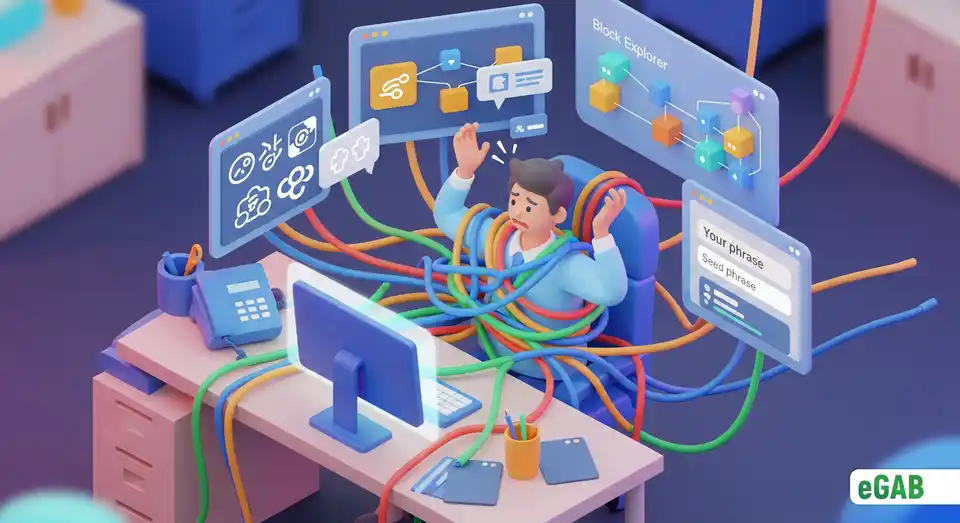
The best alternative to public NFT platforms
So, if public platforms are the wrong tool for such a critical job, what's the right one? After seeing the many disadvantages of public NFT platforms , it's clear you need a different approach. So, what is a better alternative to using public NFTs for credentials? The answer is a purpose-built ecosystem-a specialized network designed from the ground up just for managing academic credentials. You need a system that's laser-focused on security, trust, and ease of use. That's exactly why public NFT platforms are bad for academic credentials ; they simply weren't built for it.
The clear solution is eGAB (The Global Academic Blockchain Ecosystem for Digital Credentials) . This isn't just another marketplace; it's a complete, trusted framework built for securely handling verifiable credentials that settles the whole public vs private blockchain for credentials debate once and for all. The system runs on The best blockchain for NFT documents, a specialized, invite-only (or permissioned) blockchain. Because it's not open to the public, we can guarantee every record is permanent and fiercely protected. This design provides the rock-solid data security you need for sensitive student information. To solve the critical trust problem, we seamlessly integrate Trusted Third Party (TTP) functions, which act as a gatekeeper to ensure global trust and make verification completely effortless. We then add another vital layer of security with a Certification Authority (CA) that validates the legitimacy of every single issuing institution on the network, removing any doubt. By creating this secure environment for blockchain for academic records , eGAB gives students a durable and trustworthy digital identity .
And the best part? We deliver this entire system through an incredibly intuitive platform that proudly ranks as one of the Top 3 platforms in terms of global visibility. This means everyone-from graduates and universities to employers-gets a seamless and secure experience, anywhere in the world. This is the professional-grade solution education has been waiting for.
Next Step: Stop trying to force mission-critical academic credentials onto a platform built for digital art. It's time to explore a solution designed specifically for this job-a system built to deliver the robust security, unwavering trust, and seamless user experience that your high-stakes documents demand.

Summary: The Final Verdict on Public NFTs for Academic Credentials
So, what's the bottom line here? Let's be direct. While using NFTs for academic credentials sounds futuristic, putting them on public platforms is a fundamentally flawed idea that causes far more problems than it solves. Think of it this way: you wouldn't mail a confidential legal document on a public postcard. It’s simply the wrong tool for the job.
The entire system collapses at the first and most important hurdle: trust . Here’s the core problem: there's no built-in Trusted Third Party (TTP) or Certification Authority (CA) . This means employers have no reliable way to verify who actually issued the credential. They can't spot the difference between a real degree and a fake one created by a diploma mill. This single point of failure shatters the entire chain of trust and makes the credential professionally worthless for verification.
Beyond this crisis of trust, you’re facing a legal and ethical minefield, especially around privacy. Public blockchains are permanent and unchangeable by design, which puts you in direct violation of data protection laws like GDPR and FERPA . This means your institution can't honor a student’s “right to be forgotten.” This exposes you to massive financial penalties and could even cost you your federal funding. It's not just a compliance headache; it's a profound betrayal of your duty to protect sensitive student data.
On top of these critical flaws, you get a host of practical nightmares, from unpredictable costs to a terrible user experience. Let's talk about "gas fees" -the transaction costs on public networks. Their wild price swings make budgeting an impossible guessing game for your university, turning a core administrative task into a risky financial gamble. At the same time, you're forcing HR managers to deal with a clunky verification process, making them wrestle with complex crypto tools and unfamiliar jargon.
This complexity creates another huge risk: a student could permanently lose their credentials just by misplacing a single seed phrase. This completely defeats the original goal of building a system that’s simple, secure, and accessible.
Ultimately, the conclusion is crystal clear. The only viable path forward is a purpose-built, private ecosystem like eGAB , which was designed from the ground up specifically for academic credentials. It delivers the security, trust, and usability that these high-stakes documents demand. A specialized framework isn't just a better alternative-it's the only responsible one.
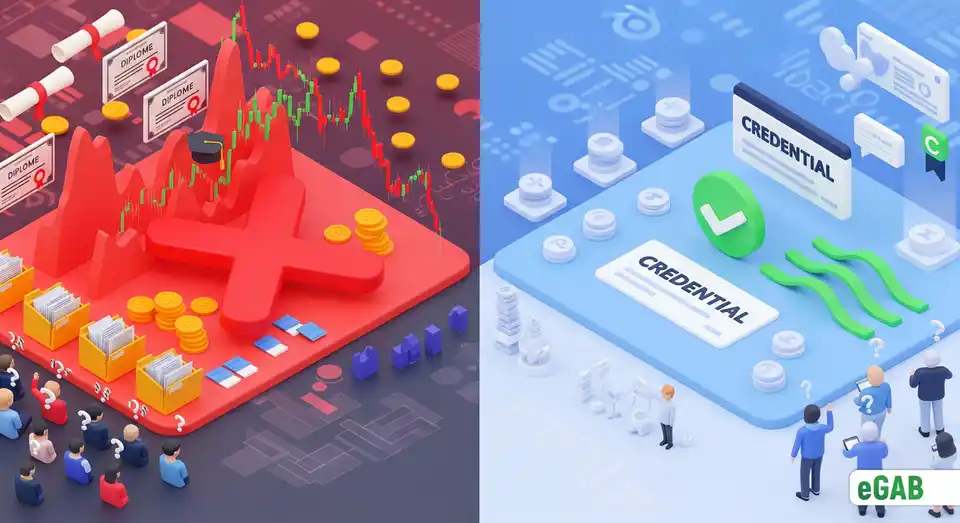
The Anatomy of a Fake: A Deep Dive into Modern Document Forgery
Verifying International Diplomas: Why It’s Broken and How to Fix It
The Hidden Risks of Your Archive: A Guide to Secure Document Storage
The True Cost of Paper Documents: Calculating the Hidden Expenses in Your Document Workflow
Fire, Flood, or Loss: How to Create a Disaster-Proof Document Storage Strategy
